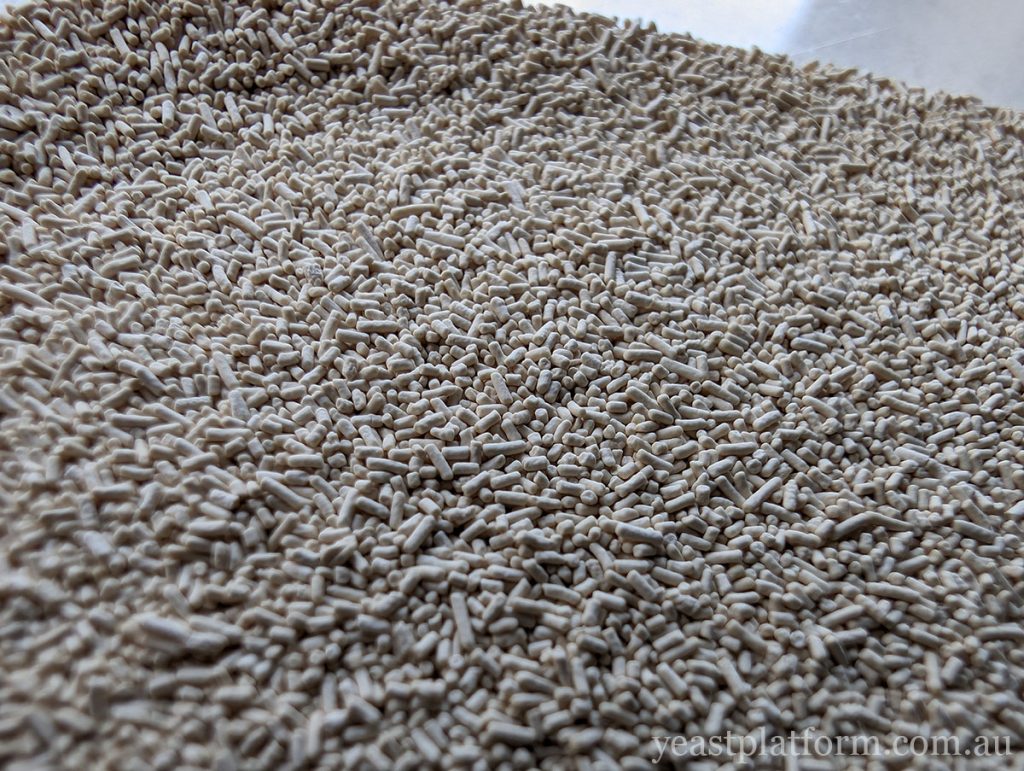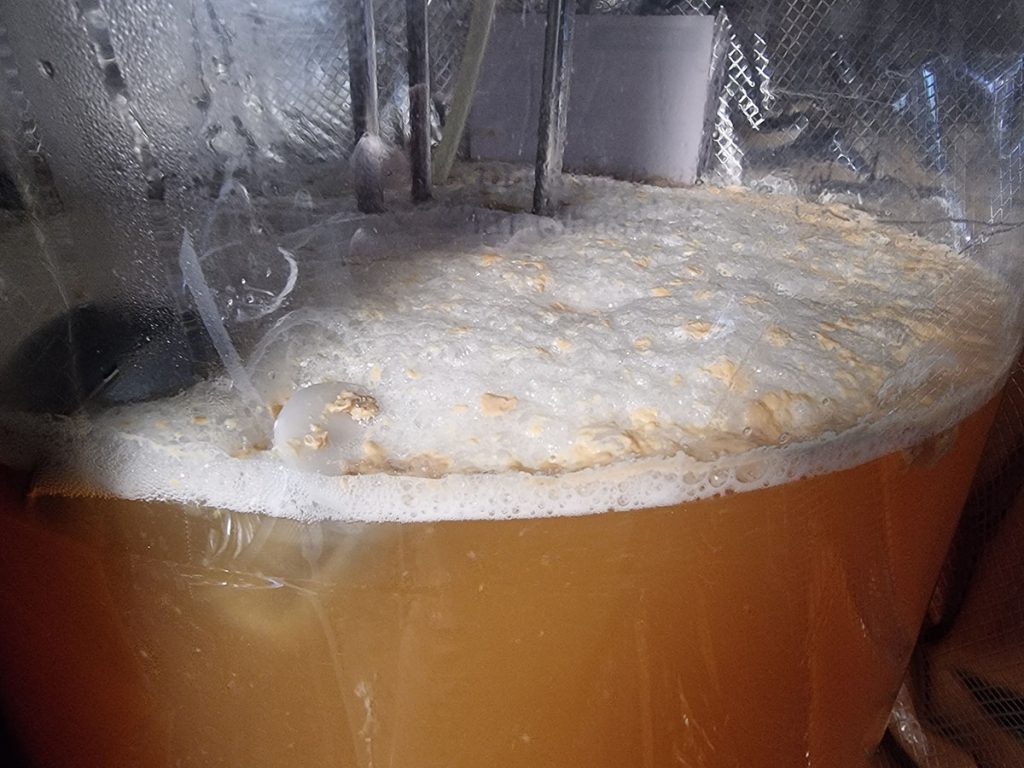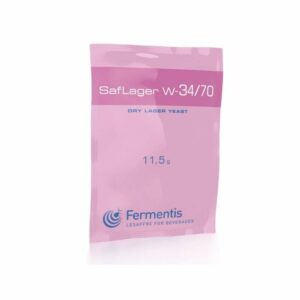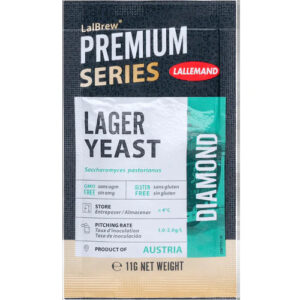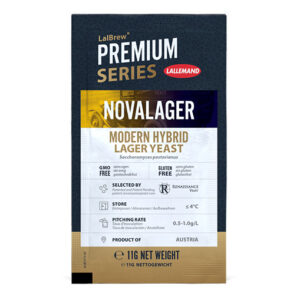Brewing the perfect lager is an art that hinges on the magic of yeast. For homebrewers, the quest for that crisp, refreshing taste often hits a roadblock when selecting the right yeast strain.
With the vast array of options, it’s easy to feel overwhelmed, unsure of how to match a strain to your desired flavor profile or beer clarity. As a seasoned brewer who has navigated these waters, I understand the frustration of trial and error in pursuit of brewing excellence.
This article aims to guide you through the nuances of lager yeast selection, offering insights into the best strains for achieving that coveted crispness and clarity.
Drawing from years of brewing experience and countless batches, I’ll share the secrets to mastering lager yeast, ensuring your next brew is not just good, but exceptional.
Quick Summary
- Yeast Selection: Choosing the right yeast strain is crucial for the flavor and clarity of home-brewed lagers.
- Yeast’s Role: Yeast affects beer’s taste, aroma, and quality, highlighting the importance of its selection.
- Fermentation Conditions: Lager yeast performs best at 7°C to 15°C, critical for achieving clean flavors.
- Byproduct Management: Temperature control and diacetyl rests are necessary to manage flavor-affecting byproducts.
- Top Yeast Strains: Identifying superior yeast strains like W-34/70 and S-23 is essential for brewing crisp lagers.
This post contains affiliate links. We received a small commission if you purchase through these links.
The Basics of Lager Yeast
Before venturing into the world of lager brewing, it’s important to understand the defining characteristics of lager yeast, how it contrasts with ale yeast, and the impact it has on the flavour profile of your beer.
Defining Lager Yeast: Saccharomyces Pastorianus
Lager yeast, known scientifically as Saccharomyces pastorianus, is a hybrid yeast strain well-suited for brewing at cooler temperatures ranging from 7°C to 15°C.
This type of yeast is revered for producing beers with a clean and neutral flavour, due to its lower ester and phenol production compared to its ale counterparts.
Lager vs. Ale Yeast: Key Differences
| Lager Yeast | Ale Yeast |
|---|---|
| Bottom-fermenting | Top-fermenting |
| Ferments at 7-15°C | Ferments at 15-25°C |
| Lower flocculation | Higher flocculation |
| Higher attenuation | Lower attenuation |
| Produces less esters and phenols | Produces more esters and phenols |
| Creates a smoother and sweeter beer | Creates a more robust and richer beer |
The main distinctions between lager and ale yeast include:
- fermentation temperatures
- flocculation tendencies
- attenuation levels
- metabolic byproducts
Lager yeast operates effectively in cooler conditions, promoting less flocculation—where yeast cells clump together and sink to the bottom—resulting in a clearer beer with a fuller body due to more residual sugars.
The Role of Yeast in the Brewing Process
Yeast is a vital component in brewing, as it metabolises the sugars within the wort into alcohol and carbon dioxide, shaping the flavour, aroma, and appearance of the beer.
Your choice of yeast strain is crucial for crafting a high-quality lager that aligns with the desired beer style.
Metabolic Byproducts and Their Impact on Flavor
Lager yeast generates distinct byproducts like diacetyl, acetaldehyde, sulphur compounds, and higher alcohols during the fermentation process.
These compounds can significantly affect the beer’s taste, requiring meticulous temperature control and sometimes a diacetyl rest (letting the temperature rise by a few degrees at the end of fermentation) to enhance beer quality and flavour contribution.
Unique Properties of Lager Yeast
When you dive into lager brewing, understanding the specific characteristics of lager yeast will help you craft a better beer.
These yeasts contribute significantly to the quality and taste of your beer, making each of these attributes worth learning about.
The Importance of Fermentation Temperature
Fermentation temperature plays a pivotal role in lager brewing. The ideal fermentation temperature for most lager yeast strains is 7°C to 15°C, appreciably lower than what you’d use for ales.
This preference for cold fermentations stems from the yeast’s special composition which suits the cold conditions perfectly, leading to the creation of beers with a clean and balanced flavour.
Paying special attention to temperature control when brewing a lager is critical. Failing to do so and letting your wort get too warm can result in significant off flavours.
Flavor Profile Contributions of Lager Yeast
Lager yeast imparts a distinct flavour profile to your beer, producing fewer esters and phenols than its ale counterparts—compounds often responsible for fruity and spicy notes.
Instead, you’ll find that it can craft subtle flavours ranging from diacetyl‘s buttery tones to delicate hues of fruits and flowers.
Depending on the lager style you aim for, these characteristics are sought-after or carefully controlled and kept to a minimum to maintain style authenticity.
Managing Byproducts for Optimal Beer Quality
Managing byproducts during the fermentation of a lager is paramount.
Diacetyl and sulphur compounds can be double-edged swords, contributing to taste in some cases, and in others detracting from it.
Paying attention to the fermentation process, adjusting the diacetyl rest, and utilising cold conditioning phases are fundamental in steering these byproducts to suit the desired beer quality.
The outcomes are in your hands; whether they compliment or compromise your lager’s integrity depends on your brewing technique.
Optimal Fermentation Conditions for Lager Yeast
When brewing lagers, it’s essential to maintain precise control over the fermentation conditions to produce the desired quality and flavour of the beer.
The temperature, pitch rate, and oxygen levels play crucial roles in this process.
Temperature: The Key to Lager Fermentation
For lager yeast, temperature control is crucial. Ideal fermentation temperature typically lies between 7°C and 15°C.
Starting the fermentation at the lower end of this range and gradually increasing the temperature ensures a clean-tasting beer with reduced byproducts.
At about 75% completion of fermentation, a diacetyl rest at approximately 18°C to 20°C is carried out to allow the yeast to absorb unwanted flavours and enhance beer stability.
Pitch Rate: Ensuring a Healthy Yeast Population
To kick off fermentation properly, a substantial yeast population is necessary.
A typical lager pitch rate is 1.5 million cells per milliliter per degree Plato. For a standard batch, this translates to needing roughly 360 billion yeast cells.
Most yeast manufacturers will provide a pitch rate calculator (such as this one from Lallemand) that will help you work out the correct amount of yeast to pitch.
Proper pitch rates are critical to reduce the lag phase, minimise contamination risk, and control byproduct formation.
The Role of Oxygen in Lager Yeast Fermentation
Oxygen is a vital component of the yeast’s health during the fermentation process. It’s highly recommended to aerate the wort prior to adding yeast, achieving an oxygen level of 8 to 10 ppm.
Proper aeration can be done using various methods but should be avoided post-fermentation to prevent oxidation and potential spoilage.
Top Lager Yeast Strains for Homebrewers
Selecting the right lager yeast strain is vital for achieving the crisp, clean flavours that characterise exceptional lagers.
Below, you will find a list of what we consider to be the top lager yeast strains suitable for homebrewing.
| Yeast Strain | Flavor Characteristics | Flocculation | Alcohol Tolerance | Optimal Fermentation Temperature | Suitable Lager Styles | Availability |
|---|---|---|---|---|---|---|
| W-34/70 | Clean and balanced | High | 9-11% | 9°C to 22°C (optimal: 12°C to 15°C) | Pilsners, Oktoberfests | The Yeast Platform |
| S-23 | Slightly fruity and estery, minimal diacetyl | High | 10.5% | 9°C to 22°C | European lager styles | The Yeast Platform |
| S-189 | Malty and complex | High | 10.5% | 9°C to 15°C (ideal: 11°C to 13°C) | Swiss lagers | Kegland |
| Diamond Lager | Crisp finish | High | 13% | 10°C to 22°C (sweet spot: 12°C to 15°C) | Various lager styles | Yeast Platform |
| Novalager | Clean brews with distinct flavours, fast fermentations | Medium | 13% | 10°C to 20°C | Lagers, Cold IPAs, Hazy Cold IPAs | Yeast Platform |
W-34/70
The W-34/70 strain is heralded for producing beers with a clean and balanced flavour. This versatile strain works well across various lager styles such as pilsners and Oktoberfests.
It’s known for its high flocculation and high alcohol tolerance, optimal for brewing in conditions between 9°C to 22°C, although preferring a narrower range of 12°C to 15°C.
W-34/70 is available in our store here.
S-23, a dry yeast hailing from Germany, imparts a slightly fruity and estery character to your lager with minimal diacetyl.
It’s excellent for European lager styles and performs well when fermented between 9°C and 22°C.
S-23 yeast is available in our store here.
S-189
The S-189 strain, sourced from Switzerland, is your go-to for malty and complex lagers.
Its high flocculation properties make it a good choice for creating brews with excellent clarity.
Aim for a fermentation temperature of 9°C to 15°C to achieve its full-bodied flavour, ideally within 11°C to 13°C.
S-189 is available from Kegland here.
Diamond Lager
For a crisp finish to your beer, the Diamond Lager yeast is a reliable choice.
It’s particularly suited to a range of lager styles and displays a high attenuation.
Fermenting between 10°C to 22°C will yield the best results, with 12°C to 15°C being the sweet spot.
Diamond Lager is available on the Yeast Platform store here.
Novalager
Novalager is a powerhouse, yielding clean brews with distinct flavour characteristics and fast fermentations.
This strain is robust, offering a wide fermentation temperature range of 10°C to 20°C. It is a stellar choice for creating various lager styles with low esters and minimal diacetyl and sulphur notes.
Novalager is available on our store here.
Advanced Techniques for Mastering Lager Yeast
Mastering lager yeast encompasses honing your skills in creating a conducive environment for yeast, ensuring consistency in your brewing process, and effectively handling fermentation issues that may arise.
The below advanced techniques are designed to refine your lager brewing craft.
The Art of Yeast Starters
If you are struggling to pitch enough yeast then using a yeast starter is a good way to meet the required pitch rate.
A yeast starter is a smaller volume of wort that allows the yeast cells to duplicate and increase the yeast cell count, promoting a robust start when introduced to your main brew.
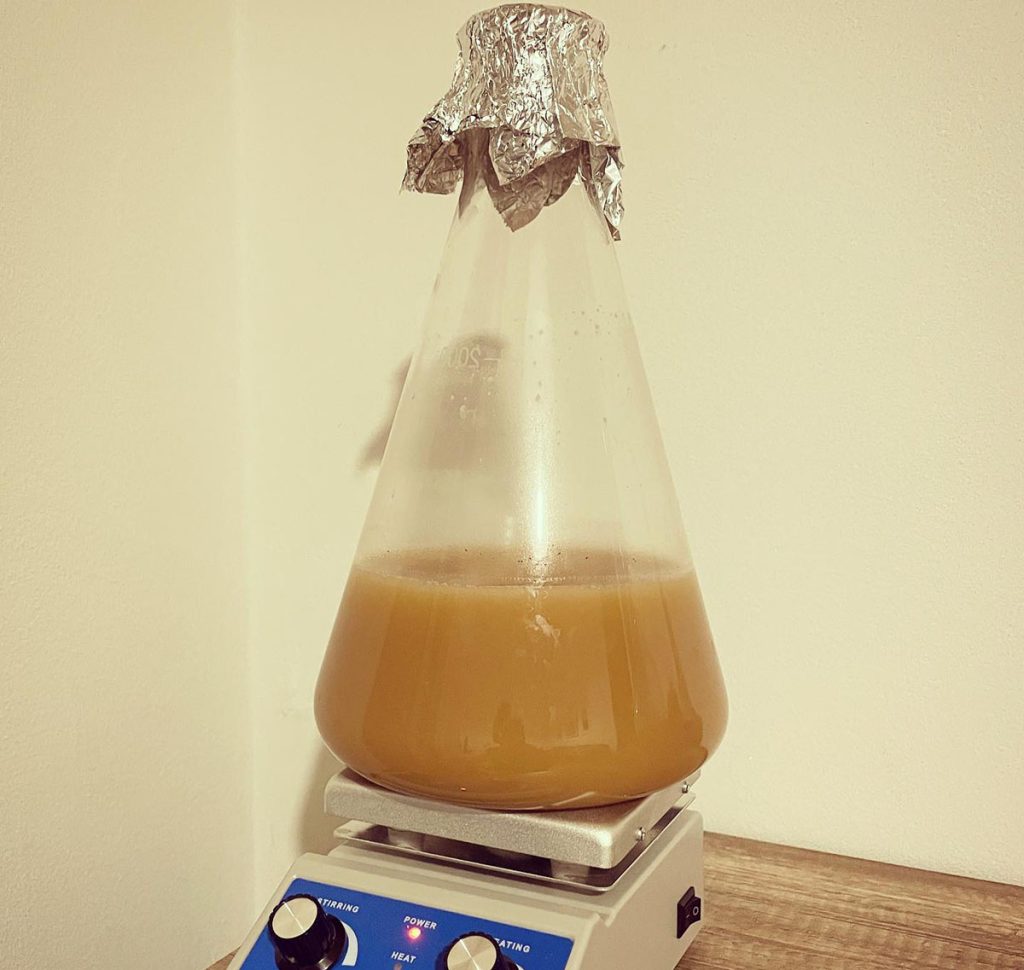
To create a yeast starter:
- Boil water and malt extract to achieve a specific gravity of around 1.040 for a wort, equating to approximately 10% of your main batch.
- After cooling the wort to the lager fermentation temperature, transfer it into a sanitised vessel, ensuring it’s well-aerated.
- Add your yeast, stirring thoroughly. For best results, maintain the mixture in motion with a stir plate.
- Keep the setup at the desired temperature for 24-48 hours, allowing the yeast to activate.
- Decant the spent wort and pitch the yeast slurry into the main brew.
The video below by Little Johns Brewing runs through the process in more detail and has some great tips:
Achieving Consistency in Lager Brewing
Consistency is key to reproducing quality results. Adhere to these pointers:
- Replicate crucial aspects like wort composition and fermentation temperature.
- Employ a consistent pitch rate and oxygenation levels for each batch.
- Implement the same diacetyl rest and lagering processes.
- Maintain comprehensive brewing logs to track variables and define areas for improvement.
Troubleshooting Common Lager Fermentation Issues
When faced with fermentation problems, address them as follows:
- Slow or stuck fermentation: Increase the pitch rate or gently elevate the temperature.
- Excessive diacetyl: Implement a diacetyl rest or review your pitch rate.
- Off-flavours and esters: Modify fermentation temperatures or adjust the oxygenation.
- Sulfur notes: Boost the temperature or refine your raw ingredient selection.



